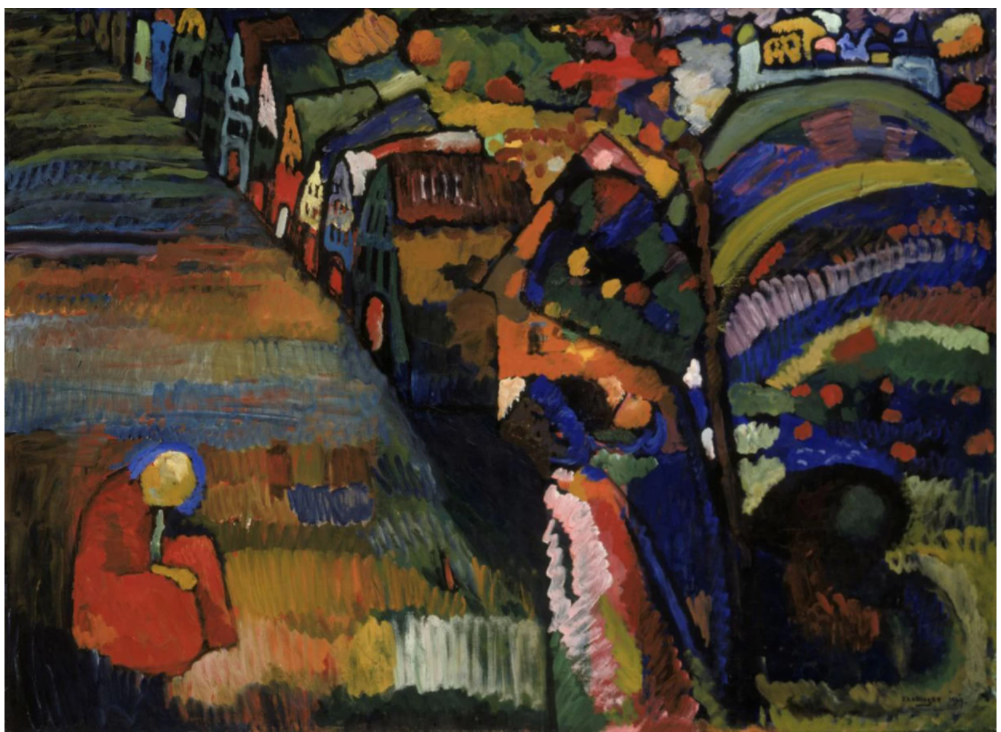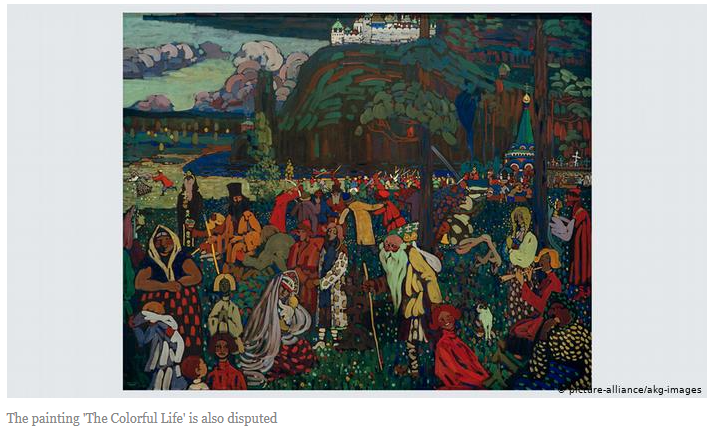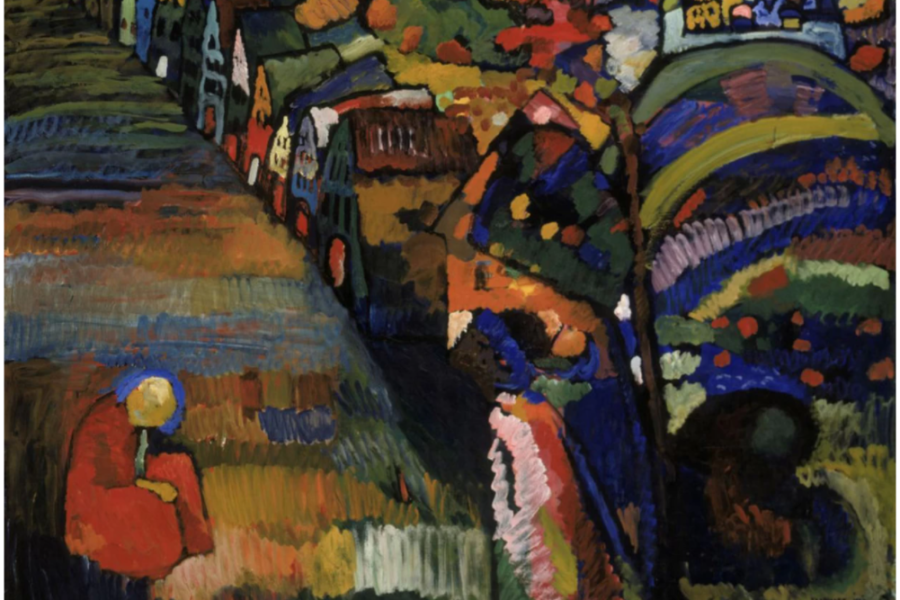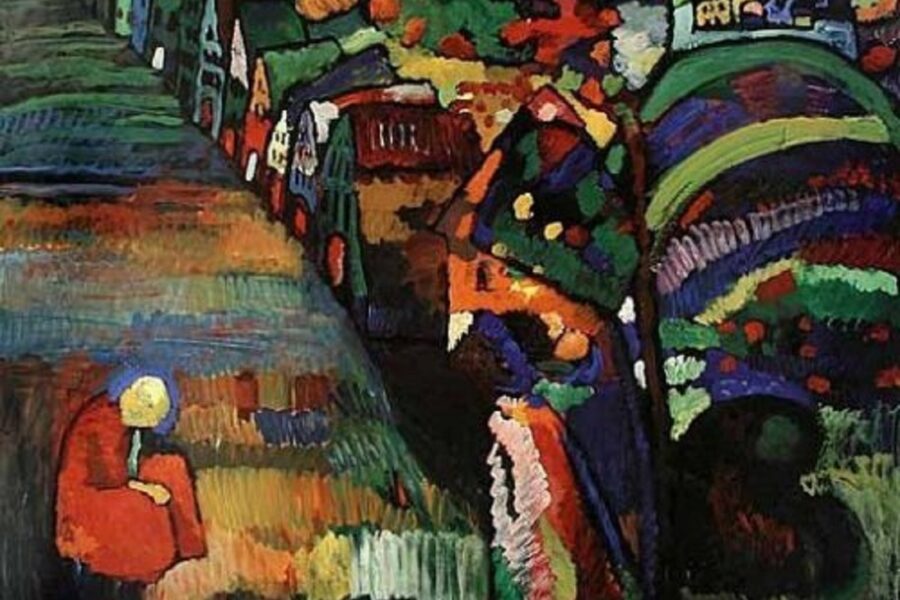A court has decided that an Amsterdam museum can keep a painting sold by the Lewenstein family during Nazi occupation, raising questions about art restitution.

An Amsterdam court has ruled on Wednesday that the city’s Stedelijk Museum does not have to return the 1909 painting by Russian painter Wassily Kandinsky to the heirs of its original Jewish owners. The work by the avant-garde artist, titled Painting with Houses, was sold to the museum in October 1940, five months after the German Wehrmacht took over the Netherlands.
The Amsterdam art museum bought Painting with Houses for 160 guilders, a price which was significantly less than its value. “The museum was not acting in good faith,” said the family’s lawyers.
This was the second ruling declaring that the artwork should not be given back to the Lewensteins.
Dutch restitution policy criticized
In 2018, the Dutch Restitutions Committee had previously rejected the heirs’ claim, saying that the museum’s interest outweighed that of the heirs. The commission cited that the Lewensteins, who were owners of a sewing machine factory, had sold the picture voluntarily due to their challenging financial circumstances, which predated the German occupation.
Prior to the ruling, the heirs’ lawyer, James Palmer, said overturning the case would send the “wrong signal.” “If the court ruling stands, the Dutch restitution policy is de facto non-existent and important looted art will probably never be returned in the Netherlands,” he said.
The heirs and their lawyers had hoped the committee’s previous decision would be repealed today.
Axel Hagedorn, another of the family’s attorneys, said previously that the sale of artworks by Jews after the Nazi takeover of the Netherlands in May 1940 should no longer be discussed as “voluntary.” “It is nonsense for a Jewish family to voluntarily sell pictures during the occupation,” he said. “This is pure looted art,” he said.

The heirs are also seeking to get back the 1907 work Colorful Life by Kandinsky, which currently hangs in the Lenbachhaus in Munich. A German art restitution commission is set to decide on this.
According to the plaintiffs, the 2018 ruling violates the so-called Washington Principles for dealing with Nazi-confiscated art. The 11 principles were laid out at the Washington Conference on Holocaust Era Assets, held in Washington, D.C. in 1998 and were agree upon by representatives from 44 countries, as well as those from cultural institutions and auction houses. They aim to make sure reparations are made, and include points that are relevant to the Lewenstein case, such as: “Pre-War owners and their heirs should be encouraged to come forward and make known their claims to art that was confiscated by the Nazis and not subsequently restituted.”
Dutch committee under fire
Since its formation in 2002, the Dutch Restitutions Committee investigates claims related to artwork which former owners lost possession of because of theft, confiscation or (enforced) sale during the Nazi regime. The panel is comprised of lawyers, a historian and an art historian.
Yet, it has recently come under fire. In early December, the Dutch minister of culture released a report after assessing the committee’s track record on ruling on cases of Nazi looted art. In recent years, the commission has drawn criticism for siding too frequently with museums, and not those seeking restitution for Nazi-era wrongdoing.
The report concluded that the commission has been “moving in the wrong direction” and lacked empathy with heirs and victims by denying some claims in the last decades that the works in question were more important to museums than to heirs.
After the report was issued, two of the panel’s seven members resigned. “If it’s looted art and there’s an heir, the interests of the museum shouldn’t be taken into account,” Jacob Kohnstamm, a lawyer who led the panel that wrote the report, told the New York Times. “We’re trying to strive for justice.”
Art restitution not as easy as it may seem
Naturally, after so many decades, a lack of documentation and a myriad of international justice systems using their own legal systems to decide on each case, art restitution cases can quickly become complex.
A similar case recently made its way to the US Supreme Court, related to a collection of medieval art known as the Guelph Treasure, which was acquired by the Nazis. Descendants of Jewish art dealers, who currently reside in the US, are suing the German State for acquiring the collection of artefacts which they believe were illegally appropriated by the National Socialists. The US Supreme Court is to decide if US courts can take up a case involving a transaction between German citizens on German soil.
In this case, Germany’s Prussian Cultural Heritage Foundation argued that a fair price was paid at the time of the sale, as the global economic crisis had depressed the art market. Meanwhile, the art dealers’ heirs argue that Jewish art dealers simply could not have a “fair deal” in 1935. Similar to the Lewenstein case, lawyers argue that the collection was sold for about one-third of what it was worth.



